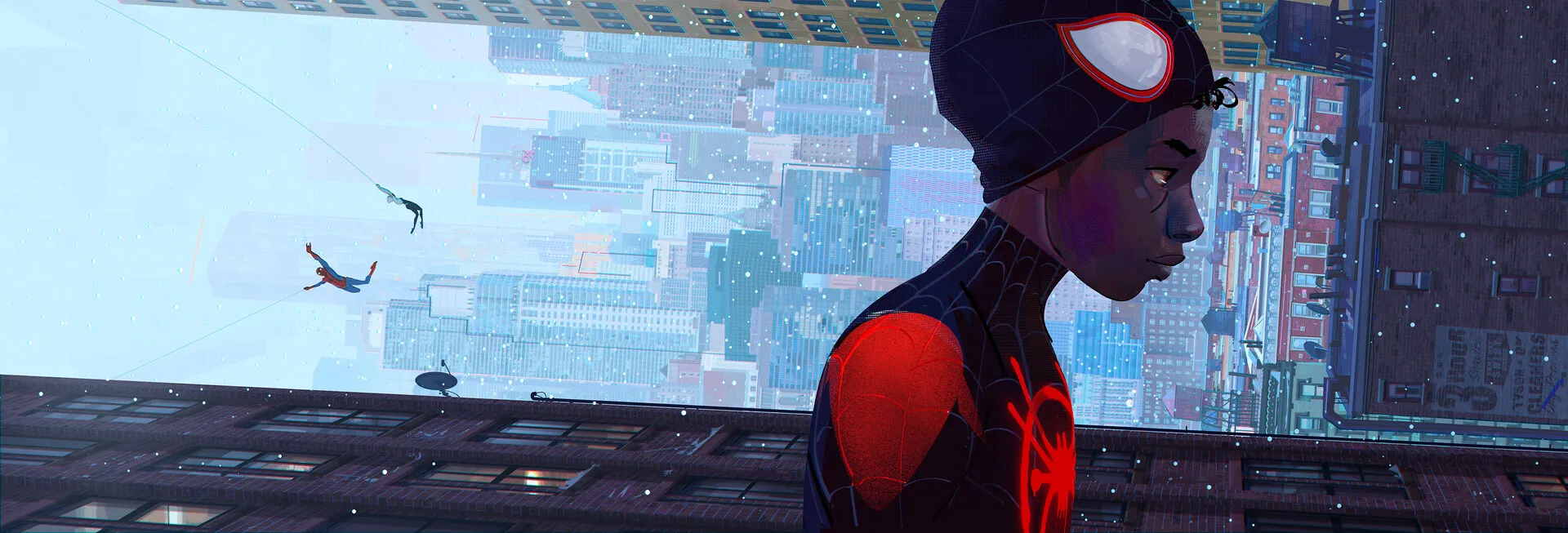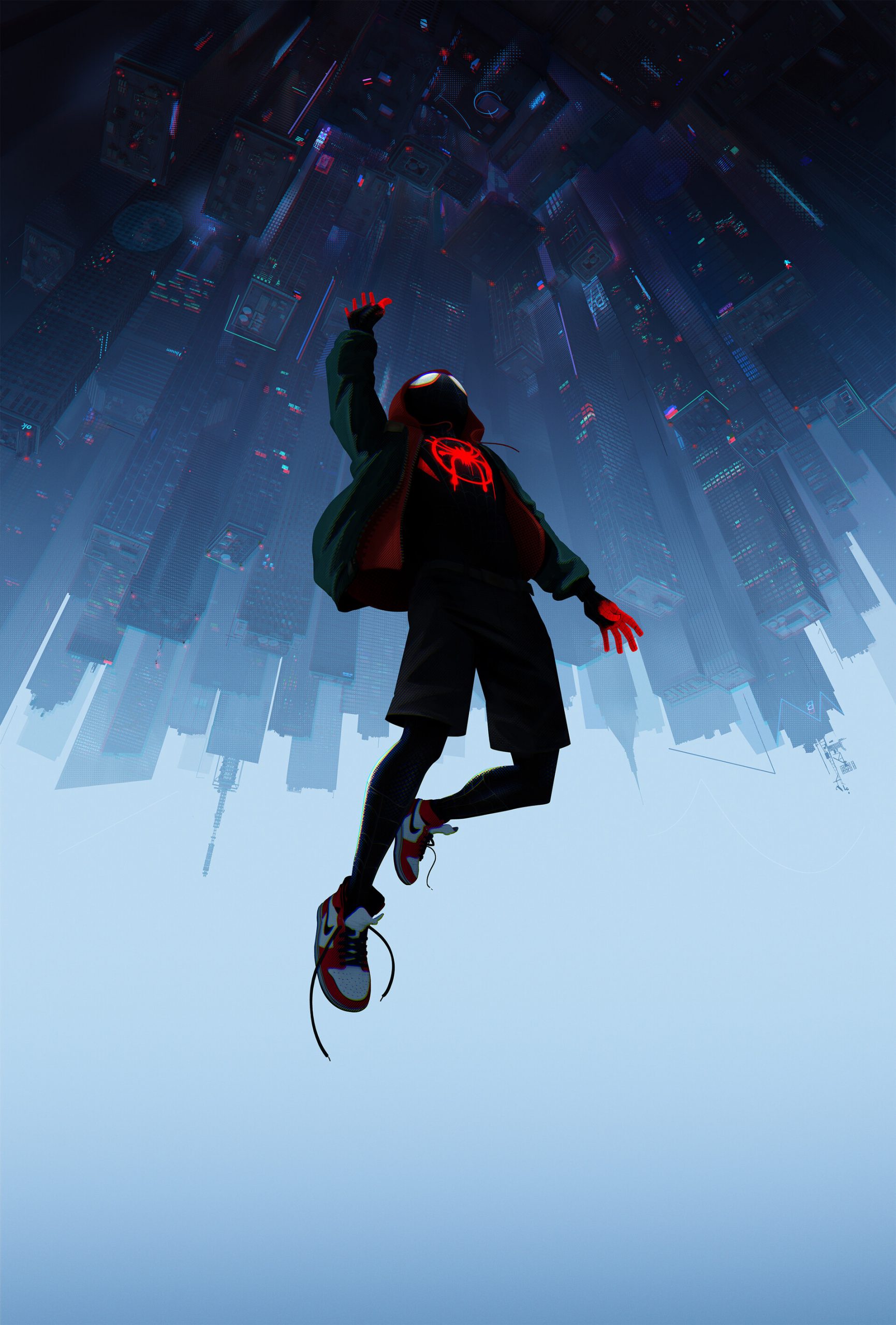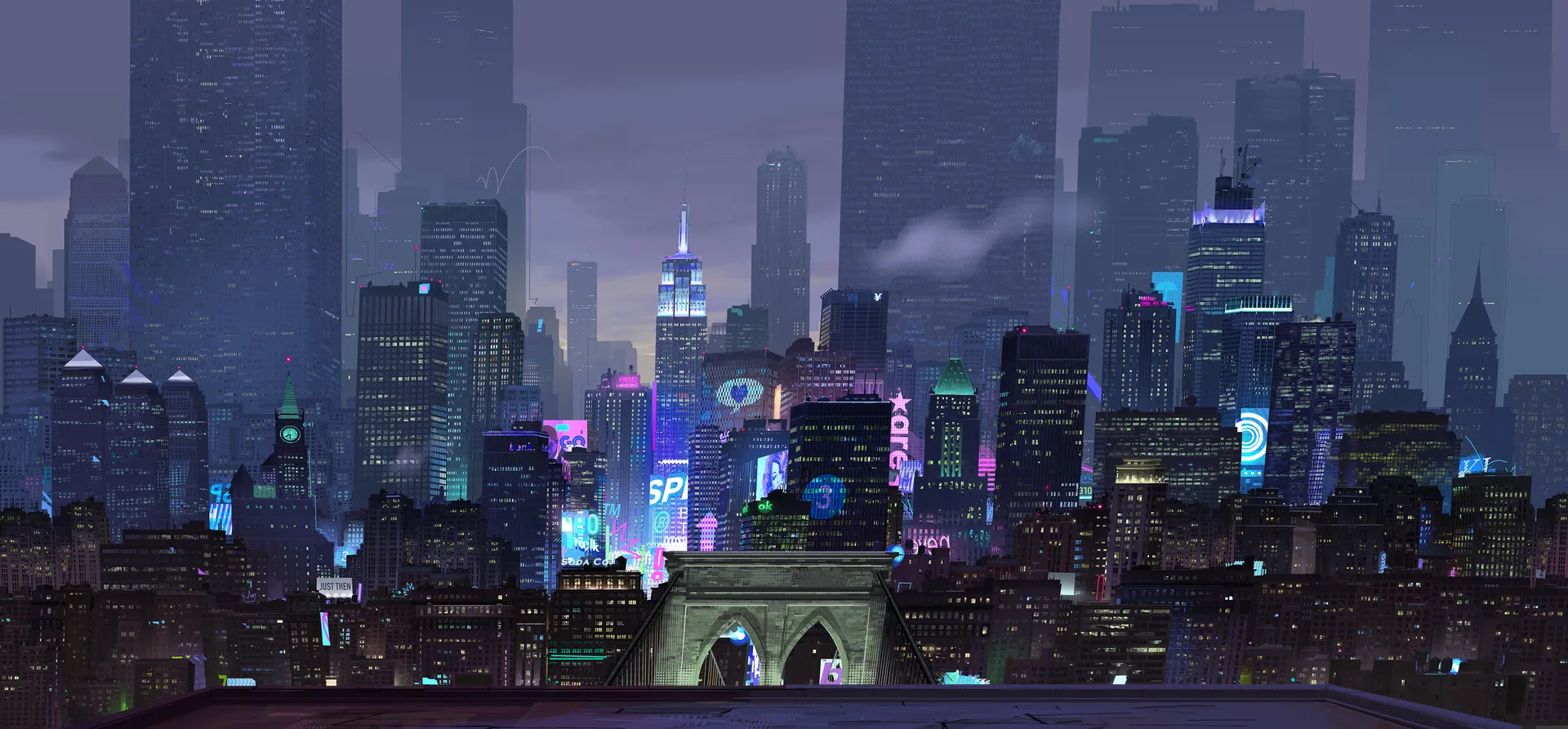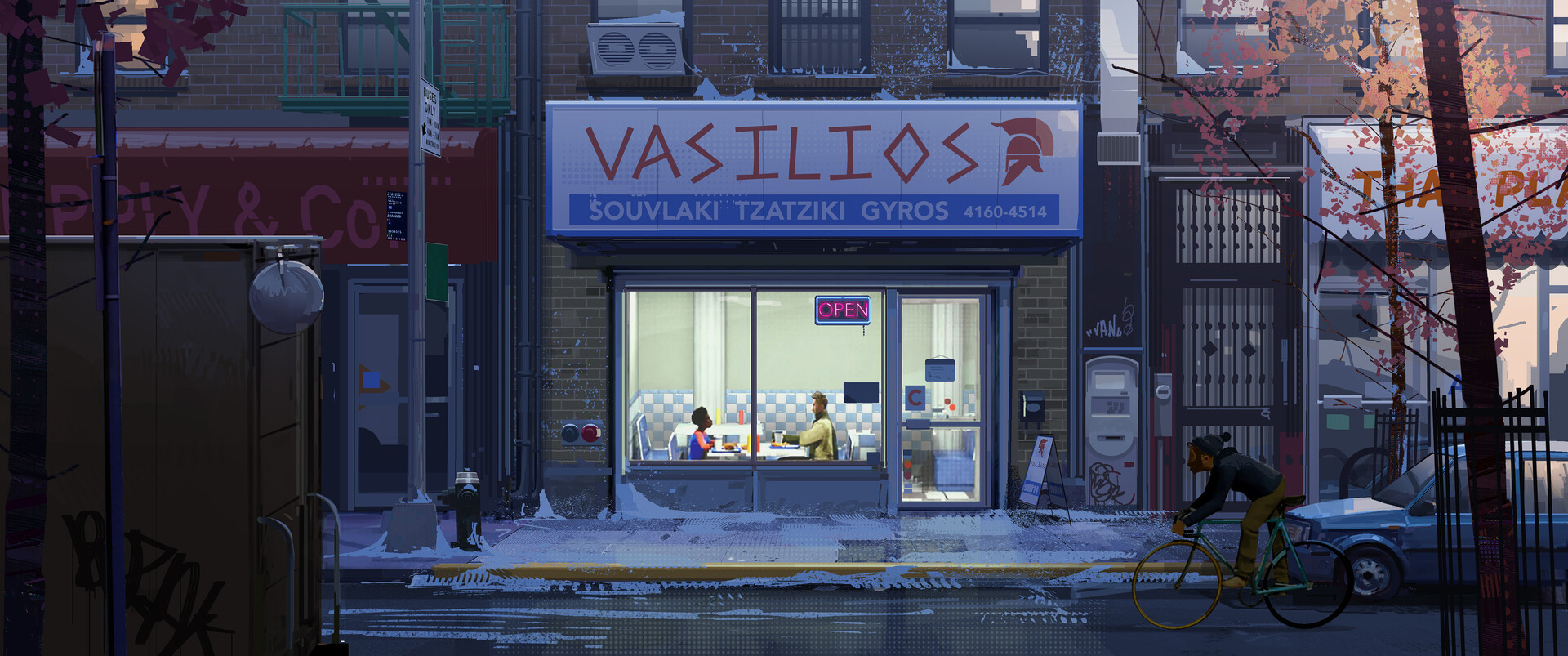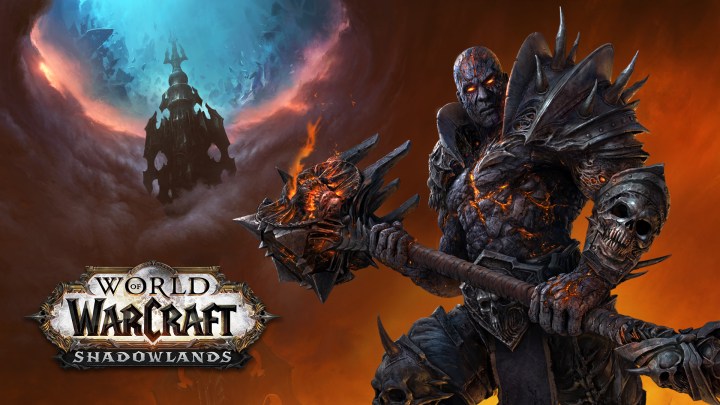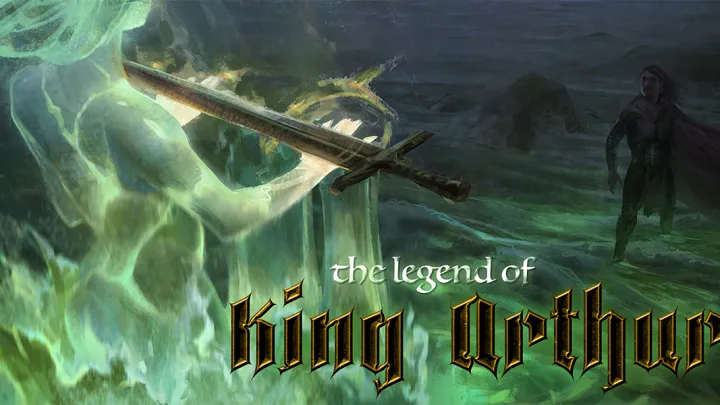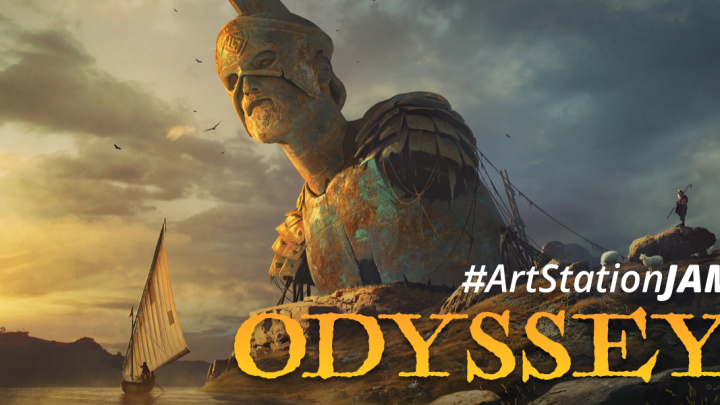Becoming an Art Director for Movies with Patrick O’Keefe
In the film industry, Art Directors work with the Production Designer and Director to communicate the overall creative vision for the project to the art department. They play an important role behind the scenes in delivering beautiful visuals and most importantly, telling the story.
If you’d like to become an Art Director one day, prepare to have all your questions answered. Patrick O’Keefe, Art Director on the Oscar-winning Into the Spider-Verse, chatted with us on his experiences, advice and all that goes into art directing a highly acclaimed animated movie.
O’Keefe’s paintings from Into the Spider-Verse made the top of the ArtStation Most Popular Wall of 2019 in Concept Art & Animation
What path led you to where you are today?
As a kid, I drew all the time and would spend nights sneaking out to paint graffiti around my hometown in Toronto. When I was 16, I started working as an illustrator. My eldest sister threw my name in for a gig to create a zine for a skin care ad campaign. I then went on to study illustration at Sheridan College, before transferring to the Emily Carr Institute to study film design.
I was working as a storyboard artist at Bardel animation at the time I graduated but then the economy collapsed, and as I was about to be out of a job. Then, I got a tip about the Need for Speed team at EA Blackbox, who needed a concept artist who could also do some graffiti. From there, I worked with EA for several years on titles like Dead Space, Battlefield, and Star Wars, all while moonlighting as a visual development artist and matte painter in the advertising world, working for clients such as Amazon, McDonald’s, Mercedes, and Kellogg’s.
I had always wanted to live in LA and make movies, so I quit my job and took a short term gig with Disney TV on the Big Hero 6 show as a background painter. I then got an offer to work with Sony Pictures Animation. There, I jumped on a few projects, including Hotel Transylvania 3, before landing on Spider-Man: Into the Spider-Verse. After several months of working as a visual development artist, I was promoted to Art Director. Currently, I am reprising my role on the sequel and occasionally squeak out covers for Marvel Comics.
A lot of Art Directors have very diverse backgrounds. What do you think are the key qualities or experiences that art directors have in common?
I have had a great opportunity to work with some incredible artists and art directors. I always tried to learn as much from them as possible. Not only about art and design, but also leadership and communication. Besides taste, the ability to communicate is paramount to being a successful art director. Some of my previous Art Directors may not have been the best painters or designers, but they had great taste and the ability to clearly communicate a vision.
Taste is very important and it seems to be the one thing that can’t be taught, but only cultivated. Having ‘good’ or appropriate taste is very key to being a successful art director. You can’t fake the funk. And so it is important to be a good fit with any project you plan on undertaking.
Having worked in a few different industries I have been fortunate enough to get exposure to lots of different art directing styles, each one had something very valuable to teach. There is something to learn from every relationship on every project. Take every opportunity to learn from those that you work with.
For Into the Spider-Verse, what was your approach for being able to achieve the unique art style? Did you have any references or inspirations of what you wanted it to look like?
When I came on to the film, it was undergoing a transformation from the original art style to what would become the final look. The team had already created a great art style, but it needed to be further developed and integrated into the story. We began to look at the source materials of comics more closely to find inspiration for what would become our ‘love-letter to comics’.
Artists like John Paul Leon, Bill Sienkiewicz, and of course Jack Kirby and Steve Ditko became major influences. But beyond that, there was a lot of influencers of my own that worked on the project. Artists like Neil Campbell Ross, Alberto Meiglo, Robh Rupple, and Peter Chan were some of my favorite artists working in the industry and it was a true blessing to be working even in the same stratosphere as them.
What previous experience before getting your first chance to work as an art director do you think best prepared you for the job?
Everything. All of it. The good and the bad projects, there was always something to learn. I have been fortunate to work in a variety of industries on a variety of projects with a variety of art directions.
See more of Patrick’s portfolio work >
What does your day-to-day look like?
My day to day involves a lot of back and forth between directors and other artists on the production. Directors are always concerned about story and how to tell the story, and artists are doing their best to come up with solutions to best aid the directors in this pursuit. I’ll spend time with directors to get an understanding of their needs. Then, I’ll work with the artists (and create artwork myself) to try and solve these problems in the most interesting and creative way possible.
As a result, we spend lots of time talking and reviewing artwork to find ways to improve our ideas. Sometimes these discussions can be very abstract and aspirational. Other times, they can be very technical when we work on an artists’ skills to ensure they have the tools to create the vision they wish to communicate.
How important does your portfolio factor in getting the job?
Your portfolio is everything, it is what gets you in the door. Always be working on your skills and expanding the work that you do. Having said that, your attitude and ideas are what keep you in the door. Nobody wants to work with someone with a bad attitude, this process is so collaborative that everyone needs to gel.
What are some of the biggest challenges or frustrations you had to deal with in your role?
Miscommunication is the biggest frustration. You’ll never have enough time or skills to do all the work yourself, and often the ideas we are discussing are very abstract concepts. At times you may communicate a vision and it does not translate properly, it could be your fault, or whomever you are trying to communicate with. It can become awfully frustrating when you are saying one thing and getting results that do not meet your expectations.
It is important to then find where communication is breaking down. Am I not saying what I think I am saying? Are they not hearing what I am saying? Is there something in my own language that is being distorted? In the end, it becomes your problem to solve and you need to be open to changing your approach often if you want to succeed.
What were some of your biggest takeaways from working on such a huge project?
No person is an island! You cannot accomplish something so big on your own and you need to be a part of a team. Never think your ideas are so good that there isn’t a better one right around the corner. And – listen. Everything you need to know is being said, you just need to listen carefully and consider the true needs of the project. Also, try not to get too stressed out.
What advice do you have for any aspiring art directors?
Maintaining motivation and inspiration is a major part of the job. You want the artists around you to always be excited to do their best work. As an aspiring art director, pay attention to what motivates and inspires you. When have you been inspired? How have others inspired you? Art directing is a selfless role. You need to think of the needs of the film, director, and artists around you, before yourself.
O’Keefe partnered with Animation Portfolio Workshop in Toronto to award an annual scholarship of tuition and mentorship.
“I took their workshop when I was in high school and they were…flexible…towards my financial situation. A couple of bucks shouldn’t stand in somebody’s way of achieving their goals. I feel it necessary to give back to all those that helped me.”
See more of Patrick’s artwork on his ArtStation page.
